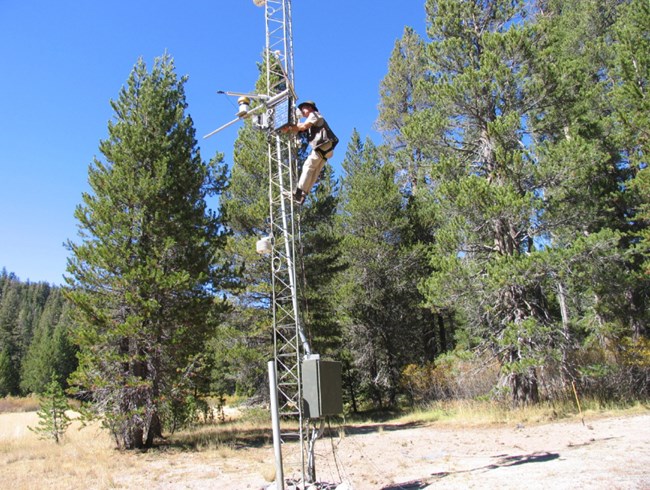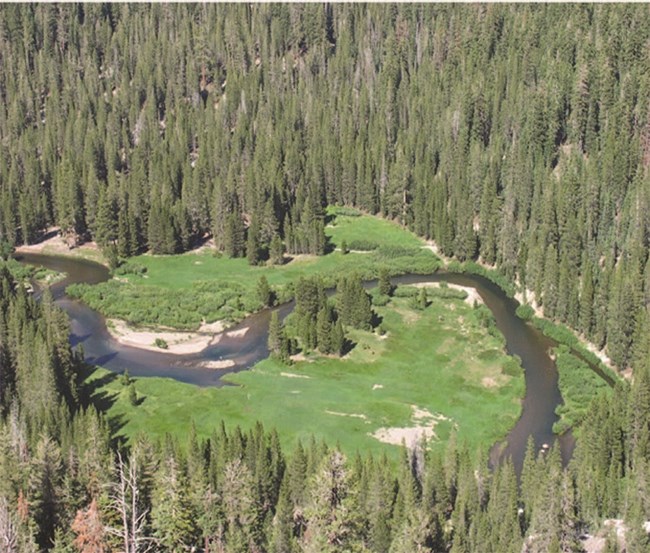
For a relatively small monument, Devils Postpile is the site of a wide range of research and monitoring projects. Although we often talk about research and monitoring together, they are different. The monument is engaged in both. For example, the work being done on air quality and cold air pooling is considered research. There are definitive questions for which monument staff is trying to find answers. Research, inventories, and monitoring are often conducted in partnership with other agencies, parks, or partners. Please contact us if you are interested in information on a particular study or project. For more information on projects conducted by the Sierra Nevada Network at the monument, visit our Inventory & Monitoring page. 
NPS / Monica Buhler Might cold air pooling offer relief from summer warming?In 2021, Devils Postpile National Monument staff worked with scientist partners to publish local research on how cold air pooling may help support a conservation strategy under a warming climate. See this paper to learn more: Quick Reads: Research and Monitoring |
Last updated: December 20, 2023
